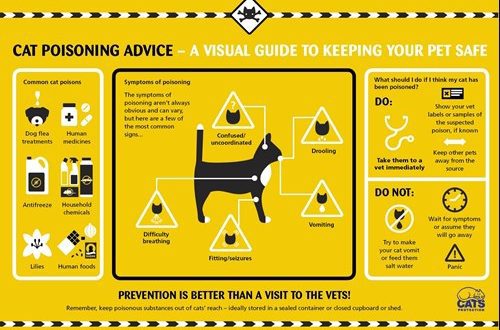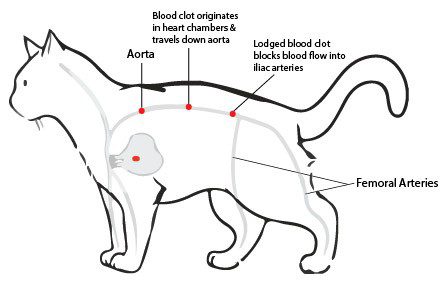
What to do if the cat’s hind legs fail?
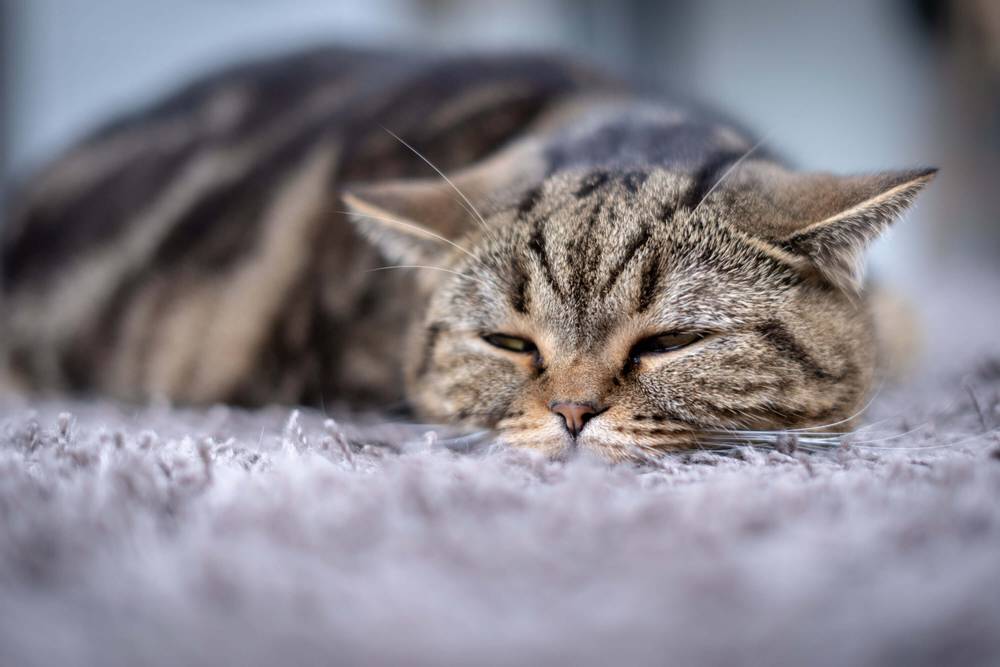
Contents
- Problems with the hind legs in cats and cats: the main thing
- General symptoms of pathology
- Possible reasons
- Injury
- Arterial hypertension
- Thromboembolism
- Colic
- Diseases of the joints
- Alimentary (secondary) hyperparathyroidism
- Hypervitaminosis A
- congenital chondrodystrophy
- Intramuscular injection
- Consequences of anesthesia
- Hypoglycaemia
- Neoplasms
- Epilepsy
- Poisoning
- Subcooling
- Heatstroke
- Acute urinary retention
- Ascites/peritonitis
- Neurological pathologies
- If an operative visit to the veterinarian is not possible
- Prevention
Problems with the hind legs in cats and cats: the main thing
If a cat or cat has lost its hind legs, you need to contact a veterinary clinic as soon as possible.
The reasons why a cat’s hind legs failed can be very different, ranging from problems with the musculoskeletal system to metabolic disorders.
Frequent symptoms accompanying weakness of the limbs: lethargy, unsteadiness of gait, lameness. But there may be other deviations.
In order to help a cat or a cat with hind leg gait problems, it is important to keep calm first and contact your veterinarian as soon as possible.
Prevention includes the improvement of places of detention, a balanced diet, timely examinations in a veterinary clinic.
General symptoms of pathology
In addition to weakness of the hind limbs, symptoms of general depression often occur: lethargy, loss of appetite.
In any case, additional symptoms will depend on the cause of the disease and can vary greatly. Below, in the “Causes” section, we will analyze in more detail the individual pathologies that can cause a cat to lose its hind legs, and discuss what should and should not be done in such situations.
Possible reasons
Injury
Cats are very inquisitive creatures, so injuries are not uncommon for them, especially if the pet has free access to the street. A cat can drag its hind legs both due to an ordinary bruise, and due to serious fractures and dislocations.
In addition to weakness or paralysis of the limbs, in case of injury, there will be symptoms of acute pain in the area of impact, lethargy, loss of appetite.
Treatment includes restriction of mobility, anesthesia. Serious injuries may require surgery.
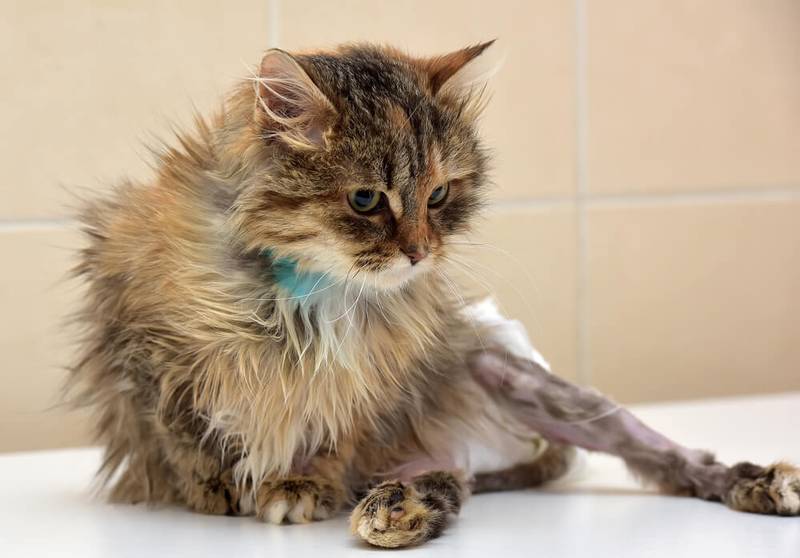
Arterial hypertension
Arterial hypertension is high blood pressure. This condition most often worries older patients and is associated with pathologies of the kidneys and the cardiovascular system. In addition to the weakness of the hind limbs, there are violations of coordination, the cat seems to drift when moving. This is accompanied by lethargy, vocalization (screams, moans, meows), dilated pupils, blurred eyes, decreased appetite, and weight loss.
To correct pressure, the doctor prescribes drugs from the group of antihypertensives. It is important to control the pressure to select an individual dosage. Of course, in parallel, treatment is prescribed for the underlying disease (droppers, blood-thinning, cardiac stimulants, etc.).
Thromboembolism
The condition is characterized by blockage of a blood vessel by a thrombus. Thromboembolism occurs most often against the background of heart failure. The reason that the cat’s hind legs fail is a blood clot that blocks the artery supplying the pelvic limbs. Additionally, there is a strong difference in the temperature of the paws and the rest of the body (the back of the body becomes much colder than the front), shortness of breath, lethargy, vocalization.
For treatment, drugs that thin the blood (anticoagulants), droppers are used. In the first 1-2 hours after the onset of thromboembolism, you can have time to perform an operation on the artery. The prognosis for this deviation is always cautious.
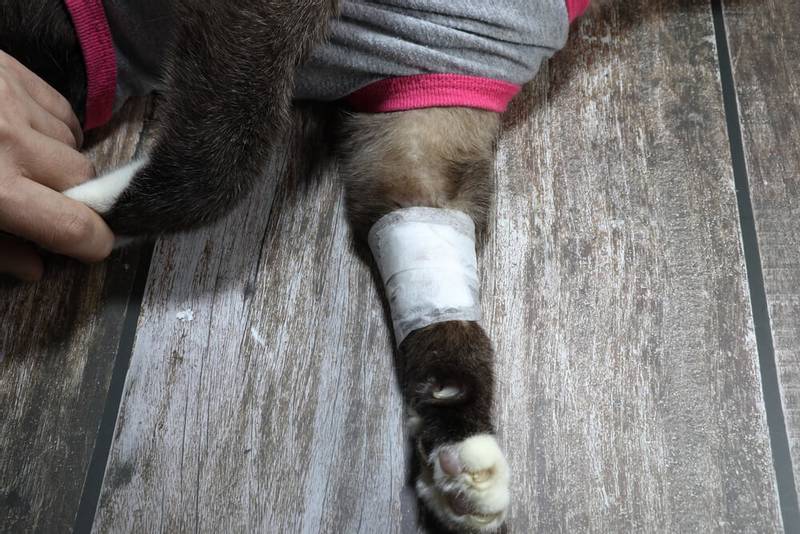
Colic
Colic is a sharp pain in the abdominal wall. It can occur with bloating, kidney and liver pathologies.
With acute pain in the abdomen, it may feel like the cat’s hind legs have given up. In fact, everything is in order with the paws, but, leaning on them, the pet may experience increased pain and therefore will not stand on them. The main symptoms of colic are hard, spasmodic abdominal wall, lethargy, rapid breathing, dilated pupils, vocalization.
Treatment should be directed to the underlying disease. Urgent anesthesia should be carried out: non-steroidal anti-inflammatory, antispasmodics, infusion of a constant rate with lidocaine.
Diseases of the joints
Osteoarthritis, arthritis, joint dysplasia can lead to weakness/atrophy of the pelvic limbs. Due to the fact that the cat’s hind legs hurt, it stops jumping on a hill, becomes less mobile. As the pathology develops, the gait changes, lameness appears. Over time, due to low mobility, muscle atrophy occurs.
Treatment consists of pain relief and moderate mobility restriction. It is important to ensure that the pet is easy to move around the apartment.
Alimentary (secondary) hyperparathyroidism
The disease often occurs in young animals due to improper feeding and manifests itself in increased bone fragility. As a rule, these are kittens that receive a significant amount of meat in the diet in the absence of control of calcium intake.
Due to a violation of the calcium-phosphorus balance, the body has no choice but to remove calcium from the bones, which cannot but lead to thinning of the bone structures.
This pathology is manifested by growth retardation, aggression, a sedentary lifestyle, the kitten’s hind legs may move apart, or it may stop stepping on them altogether. If the problem is not identified in time, it can reach serious fractures.
For treatment, it is enough to correct the diet and a short course of painkillers.
Hypervitaminosis A
Excess intake of vitamin A is accompanied by damage to the joints and bones. As a rule, the problem occurs with frequent feeding of liver or vitamin A supplements. With a home type of feeding, it is enough to feed the cat with liver 1-2 times a month to meet vitamin A requirements. When feeding with feed, giving the liver is strictly contraindicated.
Symptoms of the disease develop very slowly, over months or years, but the consequences of such feeding are incurable. Initially, there is a problem with the cervical and thoracic spine: the vertebrae become inactive and over time, the intervertebral spaces grow together and ossify (spondylosis). As the disease progresses, the joints of the limbs can also be affected, leading first to stiffness and lameness, and later to muscle atrophy and weakness of the hind limbs.
Treatment is symptomatic only – pain relief.
congenital chondrodystrophy
Chondrodystrophy is a violation of the development of cartilage throughout the body. Most often, Scottish fold cats are prone to this pathology. Hanging ears of this breed are a characteristic sign of a violation of the structure of cartilage tissue.
The symptoms are the same as in diseases of the joints: gait change, lameness, etc. Often, while still a kitten, the pet does not stand on its hind legs correctly, this is called foot-walking, and it occurs due to congenital chondrodystrophy. Over time, hip dysplasia, arthrosis, osteophytes (bone growths) may develop.
Symptomatic treatment: painkillers, moderate limitation of loads.
Intramuscular injection
During an injection, animals rarely wait patiently for the drug to be administered. Often, due to sudden movements, you can injure a muscle or get into a nerve in the thickness of soft tissues. Some drugs themselves are painful when administered, no matter how correctly the injection is given. All these actions lead to lameness, sometimes to paw dragging. Most often, the problem is solved without the intervention of a doctor. It only takes time.
However, sometimes drugs that are not intended for intramuscular injection are unknowingly injected into the thigh. Then an abscess or necrosis (necrosis) of tissues may occur at the injection site. All this will be accompanied by acute pain at the injection site, lameness, and the paw will most likely become hot and swollen.
Treatment in case of abscesses and necrosis is surgical.
Consequences of anesthesia
Narcosis, as a rule, includes several drugs. When using some muscle relaxants (drugs that cause relaxation of skeletal muscles), weakness of the hind limbs can persist for up to a day. With epidural (spinal) anesthesia, a temporary loss of sensitivity of all organs in the lower body, including the pelvic limbs, occurs. Normally, these conditions completely disappear within about a day after the operation. In addition to dragging the paws, after anesthesia, there may be symptoms of general weakness, impaired coordination.
Treatment, as a rule, is not required, you just need to provide the pet with peace. For some muscle relaxants, there are special drugs that block the effect of anesthesia, that is, the doctor after the operation can administer a medicine that contributes to the speedy removal of anesthesia drugs.
If the weakness of the hind limbs persists for more than a day, symptomatic and infusion therapy is required.
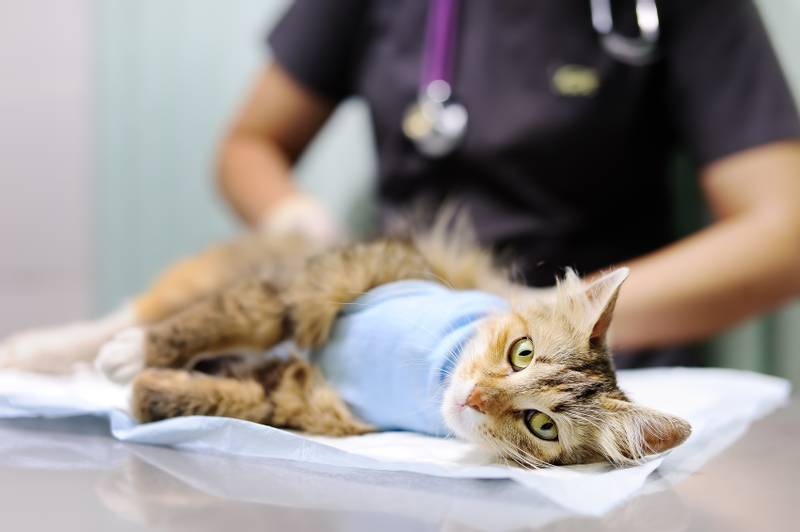
Hypoglycaemia
Sometimes severe weakness of the hind limbs can be due to low blood sugar. The cause of this condition may be starvation, diseases of the pancreas, improper administration of insulin preparations. Symptoms: general weakness, lack of coordination, unsteady gait, there may be tremors and even convulsions.
With hypoglycemia, the most important thing is to restore blood sugar levels as soon as possible. The animal needs to be fed or injected with glucose. Further treatment should be directed to the cause of hypoglycemia (correction of dosages of drugs, change in feeding regimen).
Neoplasms
Neoplasms can affect the spine, bones and joints of the limbs, as well as neighboring organs. The cause of the occurrence is not always clear, but more often neoplasia occurs in older animals.
In addition to problems with the limbs, there may be symptoms of weight loss with a normal appetite, problems with stool and urination, and there may be tumors in other organs.
Painkillers are prescribed to relieve symptoms. Surgical treatment. Often, chemotherapy or radiation therapy is required.
Epilepsy
The hind legs can be weaned during or after an epileptic attack. The disease is localized in the brain and can be either congenital or acquired.
The main symptoms are spontaneous convulsions or tremors, a certain frequency of seizures. After an attack, the animal, as a rule, gradually returns to normal on its own. However, without treatment, seizures can become more frequent, which will inevitably lead to complications.
Treatment should be prescribed by a neurologist. Anticonvulsants, sometimes antipsychotics, sedatives are used.
Poisoning
Some substances, when ingested by a cat, can cause neurological symptoms, including weakness in the hind limbs. These include some pesticides, household chemicals, permethrin (part of antiparasitic drugs for dogs).
Symptoms vary depending on the substance that caused the poisoning, and on its dose. There may be convulsions, tremors, weakness, loss of consciousness, impaired coordination.
Treatment is symptomatic, and there are antidotes for some poisons. Drip infusions are used with electrolyte solutions, anticonvulsants.
Subcooling
With a long stay in the cold, the limbs and ears are the first to suffer. With general hypothermia, there will be general weakness, a reduced reaction to external stimuli, impaired coordination, and there may be loss of consciousness. With more severe hypothermia, there may be atrophy and even necrosis (death) of the tips of the limbs and ears.
Treatment consists in slowly raising the temperature to normal, restoring normal blood flow.
Heatstroke
Heat stroke and sunstroke can be manifested by lack of coordination, lethargy, loss of consciousness, unsteady gait. Treatment, as with hypothermia, should primarily be aimed at normalizing body temperature. In severe cases, droppers are additionally prescribed.
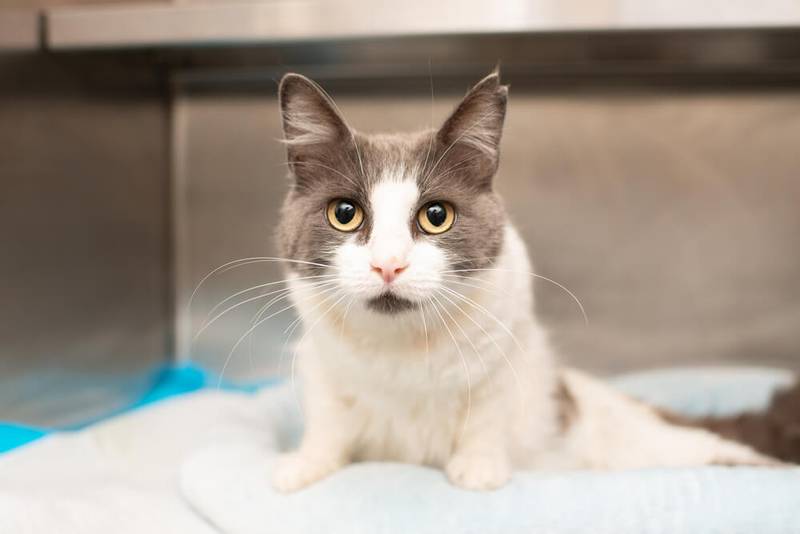
Acute urinary retention
In diseases of the urinary system, obstruction of the urethra may occur due to sand or inflammatory components. This leads to urinary retention and, if not treated in time, to more serious consequences.
At first, the pet tries to urinate, but nothing works out for him. He makes attempts more and more often, while actively digging up the tray and attracting attention with a loud meow. Over time, the pet refuses to eat, becomes inactive, breathes often. In the later stages, intoxication occurs, which leads to impaired coordination, weakness, sometimes tremor, and vomiting.
Treatment in the first place should be aimed at restoring the outflow of urine. A urethral catheter is placed. Further, drip infusions and drugs for the treatment of the underlying disease (anti-inflammatory, painkillers, antibiotics, diet) are prescribed. Often, surgery is required on the bladder or on the urethra itself.
Ascites/peritonitis
Ascites is an accumulation of free fluid in the abdominal cavity. With a significant accumulation of effusion, it becomes difficult for cats to walk, which can lead to limb weakness or even muscle atrophy over time.
Characteristic signs of ascites are an increase in the volume of the abdomen, increased thirst, rapid breathing, regular problems with stools (constipation).
Treatment consists in removing the fluid, preventing its re-accumulation. Treatment of the underlying disease that provoked ascites can vary greatly depending on the disease. Diuretics, corticosteroids, albumin preparations, blood transfusions, antibiotics, surgery may be used.
Neurological pathologies
Hernias, protrusions, infringement of the nerve roots can lead to paresis and paralysis of the limbs. Symptoms are more common in overweight animals. This is manifested by the fact that the cat’s hind legs are moving apart, there may be problems with urination and stool (urine leakage, constipation). Sometimes the symptom goes away on its own, but this does not mean that the problem has been solved. It is important to diagnose and provide assistance as soon as possible, because there is always a risk of paralysis of the limbs.
Treatment includes limiting stress, weight management, pain relief. Severe hernias may require surgery.

If an operative visit to the veterinarian is not possible
What should I do if my cat/cat loses its hind legs? This will depend on the cause of the symptom.
Before visiting the clinic, you need to ensure that the pet is calm and cared for. Arrange a bed on the floor, fence off hills or make impromptu steps to them from chairs, pillows, etc., so that the pet does not get hurt when moving around the house.
If the symptom occurs after an insulin injection, you need to feed or drink glucose to the cat as soon as possible, and then take it to the clinic.
If your pet has heatstroke, move it to a cool place and start wiping it down with a damp cloth.
In case of injuries or spasms, you can independently give your pet an anesthetic or antispasmodic. However, do not forget that not all drugs can be given to cats and the dosage of some of them can vary greatly depending on the condition and health of the pet. In order to properly provide first aid to your pet, consult a veterinarian online – you can do this in the Petstory mobile application. You can download the application from the link.
If you notice that the cat’s back part of the body is moving, it somehow strangely moves its paws or does not rely on them at all – you need to take it to the doctor as soon as possible.
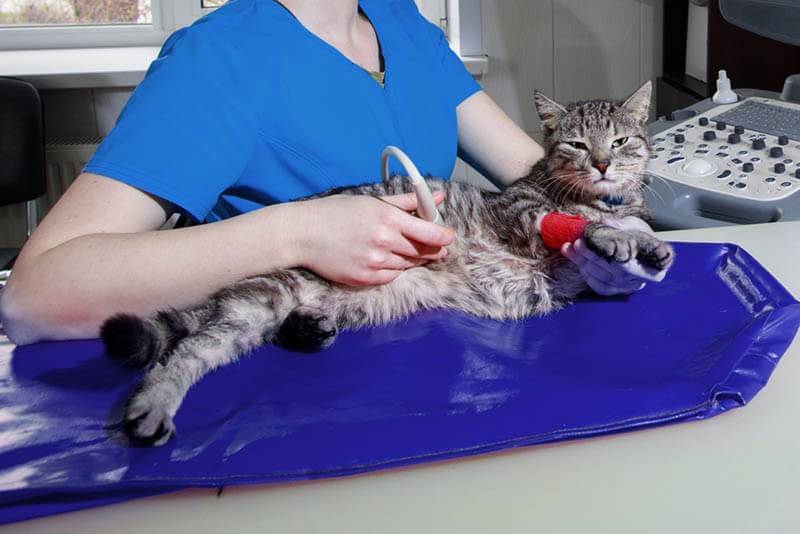
Prevention
To prevent diseases that cause weakness of the hind limbs, it is important to observe the following measures:
Regular check-ups with a veterinarian: for cats under 6 years old – 1 time per year, for cats over 6 years old – 2 times a year.
General condition control. Cats are very patient and often hide the first symptoms of diseases. At the slightest deviation in behavior, you should consult a veterinarian.
Complete balanced diet. This will be required for the prevention of diseases of the internal organs and the musculoskeletal system.
Walking should be only under supervision, in a fenced area or on a harness.
Home space security. It is necessary to carefully hide all chemicals and plants that can be dangerous for cats. Places where a pet can get stuck / fall should be fenced off. Windows should be tightly closed or special anti-cottage nets should be used.
Carefully follow the doctor’s recommendations. Before injecting, make sure that you understand the dosages of the drugs and the injection sites correctly.
It is especially important to follow a feeding regimen and glucose monitoring in the treatment of diabetes.
Summary table of causes, symptoms and treatments used
Cause | Symptoms | Treatment |
Injury | Sharp pain at the site of impact | Nonsteroidal anti-inflammatory Mobility restriction Operation |
Arterial hypertension | Impaired coordination Lethargy Vocalization pupil dilation Blurred eyes Loss of consciousness Dyspnea | Antihypertensive drugs Correction of the level of electrolytes in the blood, droppers Cardioprotective drugs (for heart failure) Diet Renal protective drugs (for kidney failure) |
Thromboembolism | Absence of reflexes on the pelvic limbs Local drop in temperature Retention of urine, feces | Blood thinners Drip infusions Operation (in the first hour) |
Colic | Acute painful abdominal wall Vocalization Rapid breathing Decreased appetite Unnatural postures | Antispasmodics Anti-inflammatory Constant rate infusion with lidocaine Diet Drip infusions |
Diseases of the joints | Inability to jump on high ground Decreased activity Lameness Change in gait uncleanliness | Painkillers Load limitation |
Alimentary (secondary) hyperparathyroidism | growth retardation Pain in the bones immobility Aggression Lameness | Diet correction Painkillers Temporary restriction of mobility |
Hypervitaminosis A | Gait disturbance plantigrade Growths on the joints | Diet correction Painkillers Mobility restriction |
congenital chondrodystrophy | Lameness Change in gait plantigrade Growths on the joints Poses that are unnatural for cats | Load limitation Painkillers |
Intramuscular injection | Lameness on the limb into which the drug was injected | Injection site massage Time |
Incorrect intramuscular injection | Sharp pain at the injection site local edema Local temperature increase Long-term persistence of symptoms (more than 2 hours) | Surgical treatment Antibiotics |
Anesthesia | Unsteadiness of gait Lethargy Impaired coordination Weakness of the limbs Tremor | Time Drip infusions Antagonists of narcotic drugs |
Hypoglycaemia | General weakness Tremor Clouded consciousness | Drinking glucose Feeding |
Neoplasms | Old age (more common) Oncology in history Enlargement of some organs | Operation Chemotherapy Radiation therapy |
Epilepsy | Convulsions Tremor Certain frequency of seizures | Anticonvulsants Sedatives Sedatives |
Poisoning | Vomiting Diarrhea Convulsions Tremor Loss of consciousness | Antidotes Drip infusions Gastric lavage Enterosorbents |
Subcooling | Local drop in temperature Blueness of visible integument Desensitization Decreased reflexes | Slow heating Drip infusions with warm solutions |
Heatstroke | Impaired coordination Unsteadiness of gait Lethargy Decreased response Loss of consciousness Dyspnea | slow cooling Rubbing with wet rags |
Acute urinary retention | Dyspnea Vocalization Vomiting Cramping, abdominal pain Crazy attempts to urinate Vomiting Weakness | Restoration of the outflow of urine Antispasmodics Painkillers Drinking regime Diet Drip infusions Antibiotics |
Ascites | Increasing the volume of the abdomen Dyspnea Constipation Urinary retention | Removal of excess fluid (aspiration, laparocentesis) Treatment of the underlying disease, depending on the cause: antiviral albumin nephroprotectors corticosteroids diuretics, etc. |
Neurological pathologies | Paw dragging Impaired coordination Change in gait Retention of feces or urine | Anti-inflammatory Load limitation Operation |
July 20 2021
Updated: July 24, 2021



